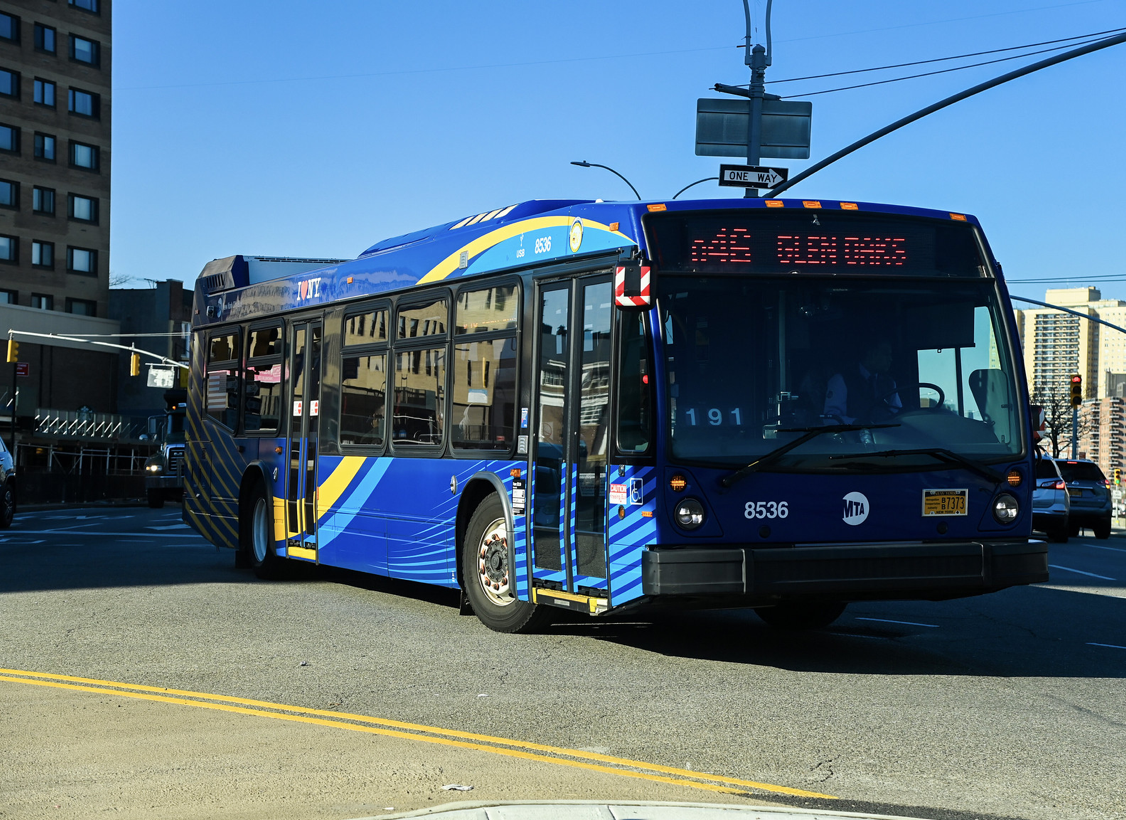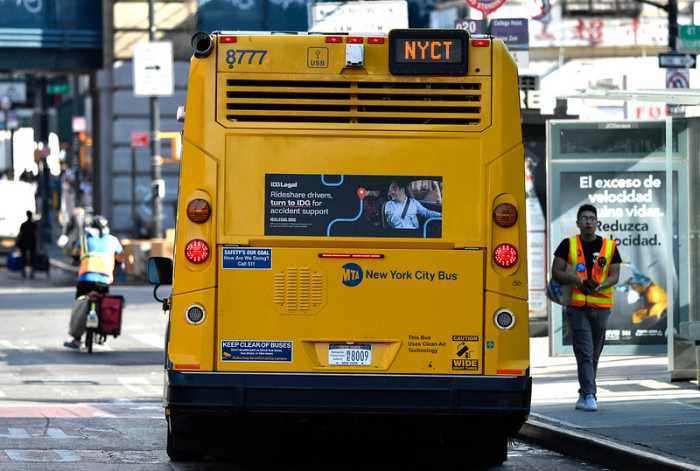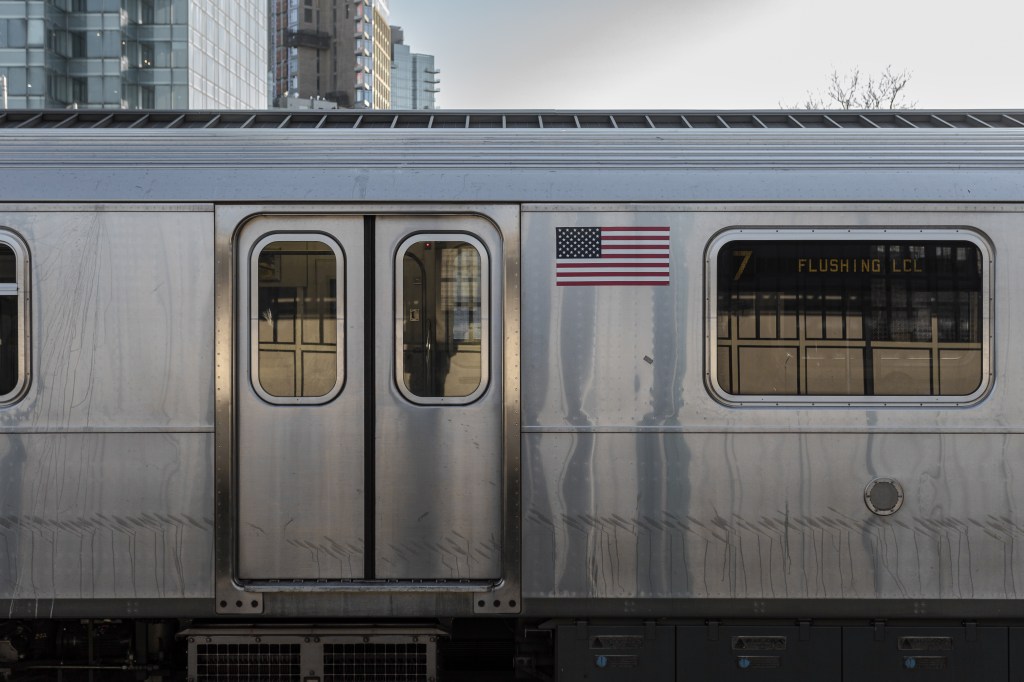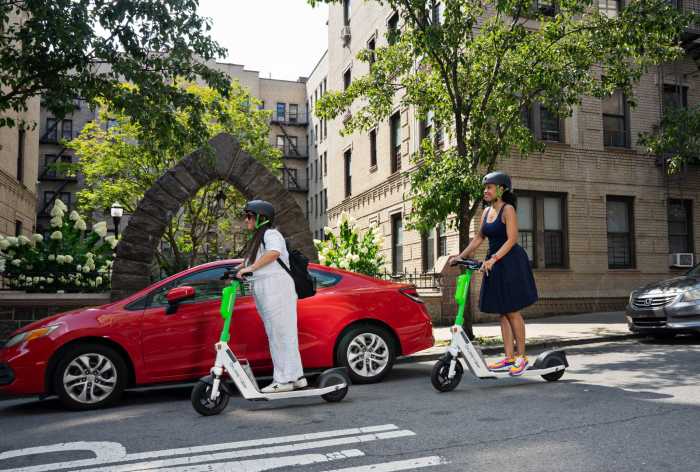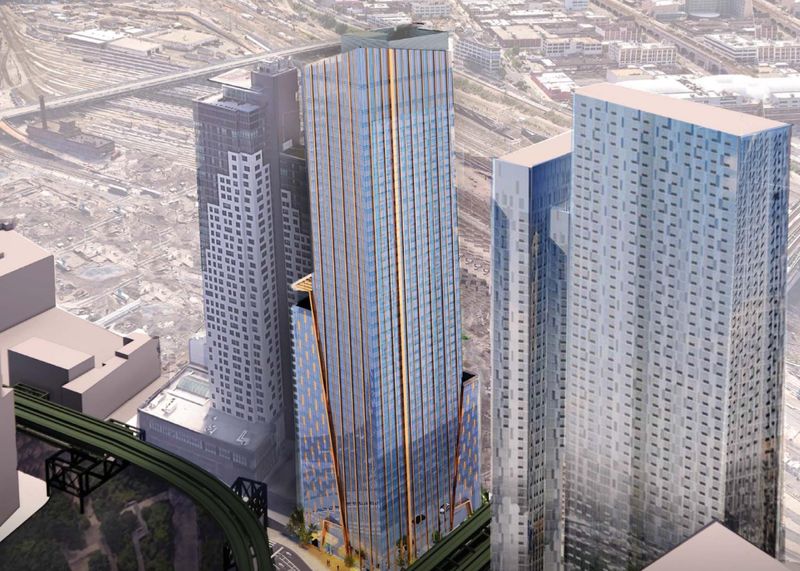At a Community Board 7 transportation committee meeting on Thursday evening, the MTA noted various concerns that northeast Queens bus riders have with their plan to overhaul the borough’s entire bus system for the first time in decades.
The Queens Final Bus Redesign Plan, unveiled by the MTA in December, is currently in the public outreach stage. Representatives from the MTA are making rounds to community boards to share the plan and collect feedback. A final public hearing and subsequent board vote will be held later this year.
One major aspect of the plan, which has received backlash from transit advocates, is the removal of bus stops – referred to as bus stop spacing or balancing. The DOT says the move would improve reliability while speed up service by 20 seconds with each stop removed. The agency calculates that 83% of riders would still be able to use the same bus stop, despite the planned removal of approximately 1,400 stops.
The distance between bus stops would increase. For instance, the average distance between stops along the Q18 route, which runs from Astoria to Maspeth, is currently 673 feet. Under the new plan, the proposed average distance would be 1,100 feet, which is about 5-6 street blocks.
Some riders said they believe that the effort to speed up service will make the bus less accessible, especially for people who are elderly and disabled. Walking additional blocks to the next available bus stop could be burdensome for certain groups. Some also doubt that it will speed up service.
“I have to question the math of what you’re doing because what really takes the time on a bus, or train, any type of public transit is load time – when people get on and off the bus,” said Warren Schreiber, 2nd Vice Chairperson of CB7. “They’re going to get on at the stop that might be two blocks away, but they’re still going to get on that bus. You’re just going to have an increased load.”
The MTA reps acknowledged that bus stop balancing has been a common concern brought up since they began outreach. They said that in deciding where to remove stops, frequented destinations, transit connections and ridership are taken into consideration. They added that “localized knowledge” of particular stops will help them determine which stops should remain.
“We would like to hear from folks like you to tell us exactly which of these stops are crucial for your neighborhood, to get to where you need to go. So that’ll be tremendously helpful,” said Matthew Lazo, a senior transportation planner at the MTA. Another rep added that the more specific the feedback is, the better their efforts to modify the plan will be.
Schreiber also relayed a question from CB7 board member Lawrence Hughes, who could not attend the meeting but had passed along dozens of comments on the bus redesign plan.
His concern was that some routes, especially the Q31 that runs between Jamaica and Bay Terrace, are focused on bringing riders to big box stores and shopping centers, while excluding smaller businesses.
Under the current version of the plan, the Q31 would no longer stop along Bell Blvd. and would stick to Utopia Parkway as part of an effort to reduce turns to streamline trips. But access to Bell Blvd. would still be available with connections to the Q13 and Q27.
“We value our mom and pop stores and we want them to thrive, and have the service,” said Schreiber.
Another attendee brought up a desire for a bus countdown clock, which lets riders know how long they need to wait for their bus.
Cate Contino, director of special projects and strategic initiative at the MTA, responded that the countdown clocks, which have been implemented in some Manhattan stops, were the result of partnerships with city council members and the Dept. of Transportation. The joint efforts currently needed to implement them makes it a “challenging” initiative.
“What we have done at the MTA in lieu of that is try to make sure that our tech and tools are as accurate as they can be,” said Contino, citing the MTA Bus Time app and Whatsapp, which offers assistance in 160 languages with the help of Google Translate. “But I, as a customer, would love a countdown clock at my corner. And we can certainly take that back as feedback.”
The MTA reps will be attending CB7’s full board meeting on Feb. 12 in Whitestone. They will also soon announce open houses where community members can voice their concerns.

